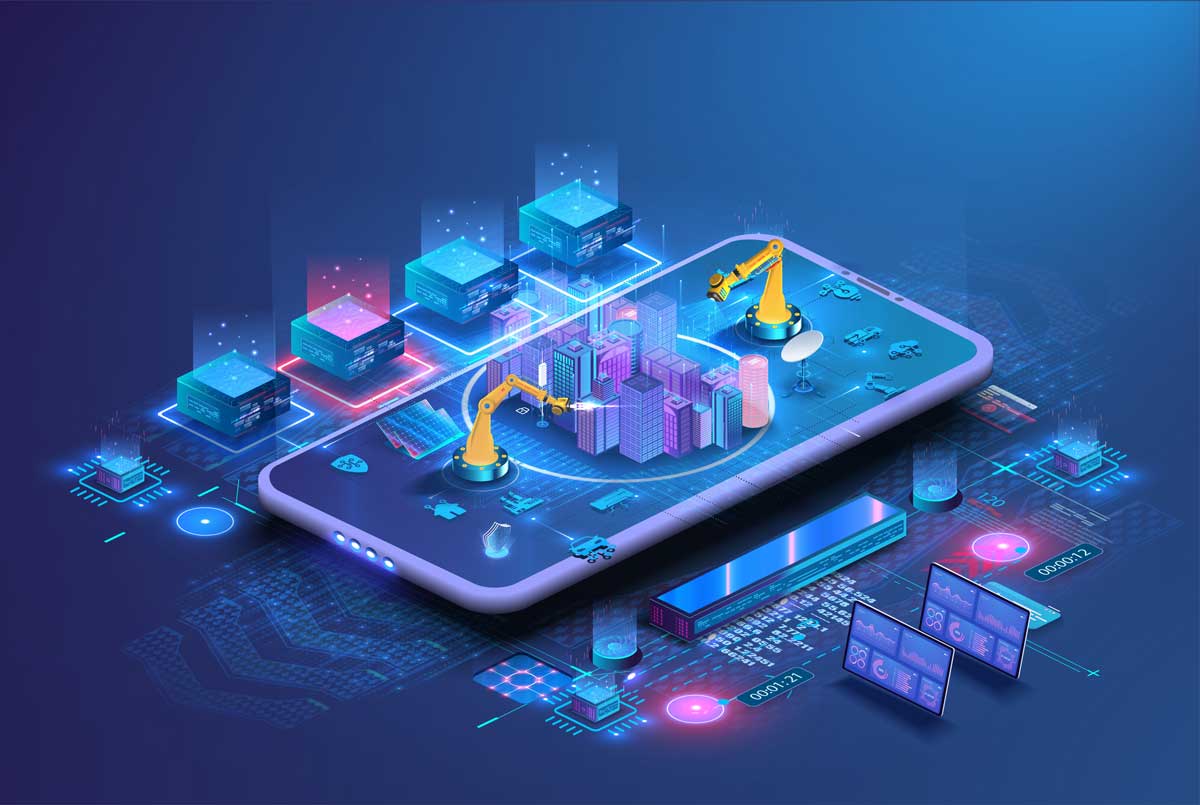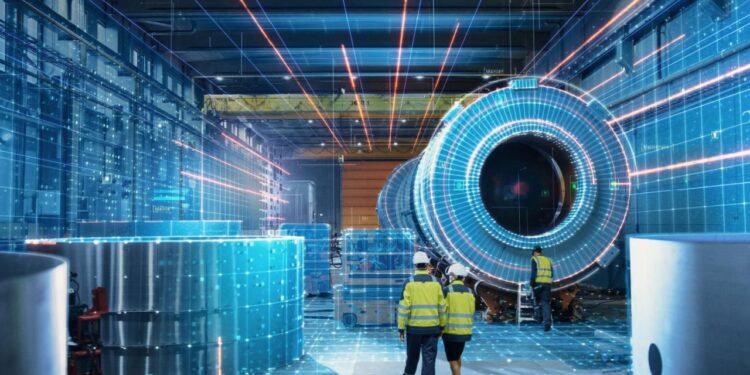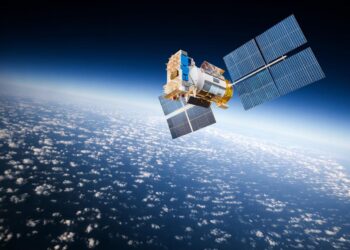In the relentless pursuit of efficiency, optimization, and foresight, a revolutionary technology is emerging from the digital realm: the digital twin. What was once a niche concept in aerospace engineering is now a powerful force transforming industries from manufacturing and healthcare to urban planning and beyond. A digital twin is a virtual, high-fidelity replica of a physical object, process, or system. It is not a static 3D model; it is a dynamic, living simulation that is constantly updated with real-time data from its physical counterpart. This comprehensive article delves into the profound impact of digital twin technology, exploring the foundational pillars that make it a reality, the diverse applications that are already reshaping our world, and the immense opportunities and critical challenges that lie ahead as we build a parallel digital universe.
For generations, our approach to building and managing complex systems was a process of trial and error. We would design a product, build a physical prototype, and test it, a process that was both time-consuming and incredibly expensive. The digital twin shatters this paradigm. It allows us to create a virtual, fully functional replica of a system before it is built, giving us a “sandbox” to test new designs, simulate different scenarios, and predict potential failures without any physical risk. This is not just a technological upgrade; it is a fundamental shift in how we innovate. It is a world where we can predict the future by running a simulation, where we can understand a system’s behavior by analyzing its digital double, and where we can optimize a process with a level of precision that was once impossible.
The global interest in digital twin technology is skyrocketing, with massive investments from governments and corporations. The convergence of powerful new technologies—from the Internet of Things (IoT) and artificial intelligence (AI) to high-speed 5G networks—is making digital twins not just a possibility, but a necessity for a competitive and efficient future. From a digital twin of an entire city that can optimize traffic flow to a digital twin of a human heart that can help a doctor to plan a surgery, the applications are as diverse as they are profound. This is more than a technological shift; it is a profound societal one, where we are beginning to redefine our relationship with the physical world by creating its digital reflection. The digital twin revolution is here, and it promises to be one of the most impactful and transformative technological shifts of the 21st century.
The Technological Bedrock

The power of a digital twin is not a single piece of technology but a sophisticated and integrated ecosystem that is built on several foundational pillars.
A. The Internet of Things (IoT) as the Data Source
The lifeblood of a digital twin is a continuous stream of real-time data from its physical counterpart. This data is collected by a vast and growing network of sensors that are embedded in the physical object, process, or system. This is the Internet of Things (IoT). In a digital twin of a factory, this includes sensors on every piece of machinery that measure temperature, vibration, and performance. In a digital twin of a city, it includes sensors in traffic lights, on bridges, and in public spaces that measure traffic flow, air quality, and noise levels. This ubiquitous sensing is what connects the physical world to the digital, providing the real-time data that makes the digital twin a living, breathing entity.
B. High-Fidelity Modeling and Simulation
A digital twin is more than just a data dashboard; it is a high-fidelity, three-dimensional model of a physical system. This requires powerful modeling and simulation software that can create an incredibly realistic and detailed replica of the physical object. The model must not only look like the physical object but also behave like it. This means that the simulation must accurately replicate the laws of physics, the dynamics of a process, and the behavior of the system under different conditions. This allows us to use the digital twin as a “sandbox” to test new designs and simulate potential failures without any physical risk.
C. Artificial Intelligence (AI) and Machine Learning
The raw data from the IoT sensors and the sophisticated model of the system are meaningless without a way to interpret them. This is where artificial intelligence (AI) and machine learning play a crucial role. AI algorithms can analyze the real-time data from the digital twin to identify patterns, predict potential failures, and optimize the system’s performance. For example, an AI could analyze the data from a digital twin of a factory and predict when a piece of machinery is about to break down, allowing for a proactive maintenance schedule. This shift from a reactive to a predictive approach is a major benefit of digital twin technology.
D. Cloud Computing and Edge Computing
Creating and running a high-fidelity digital twin requires a significant amount of computational power. This is where cloud computing provides the scalable and centralized infrastructure to store and analyze the massive amount of data and to run complex simulations. However, for applications that require a split-second response, such as a digital twin of a car that needs to react to an accident, relying on the cloud is too slow. This is where edge computing plays a crucial role. Edge computing processes data closer to its source, at the “edge” of the network, enabling real-time decision-making for mission-critical applications. The combination of cloud and edge computing provides a flexible and powerful architecture for the digital twin.
Applications Across a Wide Range of Industries
The benefits of digital twin technology are not limited to a single sector; they are being applied to a diverse array of industries, creating new efficiencies and opportunities.
A. Manufacturing and Industrial Automation
In manufacturing and industrial automation, the digital twin is a game-changer. A digital twin of an entire factory can be used to optimize the layout of the assembly line, test new robotics, and simulate different production scenarios without any physical downtime. This can lead to massive gains in efficiency, a reduction in waste, and a faster time-to-market for new products. It can also be used for predictive maintenance, where a digital twin of a piece of machinery can predict when it is about to fail, allowing for a proactive repair and preventing a costly disruption.
B. Urban Planning and Smart Cities
In urban planning and smart cities, a digital twin of an entire city can be used to model and simulate the impact of new infrastructure, such as a new road or a new public park. City planners can use the digital twin to analyze traffic flow, predict air quality, and understand the impact of new policies on the city’s residents. This allows for a more data-driven and intelligent approach to urban management, creating a more efficient and livable city for everyone.
C. Healthcare and Personalized Medicine
In healthcare and personalized medicine, the digital twin is a powerful tool for improving patient outcomes. A digital twin of a human heart can be created using a patient’s medical data, such as CT scans and vital signs. A doctor can then use this digital twin to plan a complex surgery, simulate the impact of a new treatment, and predict the patient’s recovery time. This can lead to more precise and personalized treatments, a reduction in the risk of surgery, and a faster recovery for the patient.
D. Aerospace and Automotive Engineering
The aerospace and automotive industries have long used simulation, but the digital twin takes it to a new level. A digital twin of an airplane engine can be used to monitor its performance in real-time, predict a potential failure before it happens, and optimize its fuel efficiency. In the automotive industry, a digital twin of a car can be used to simulate its performance on different roads and in different weather conditions, allowing engineers to test new designs without having to build a physical prototype. This can lead to a safer and more efficient vehicle.
Challenges and the Future of Digital Twins

Despite the immense promise of digital twin technology, its development is not without significant challenges that must be addressed.
A. Data Integration and Interoperability
A digital twin requires a continuous stream of data from a wide range of sources, from IoT sensors to legacy systems. The challenge of data integration and interoperability is a major hurdle. The data must be standardized, cleaned, and integrated in real-time for the digital twin to be accurate. The lack of universal standards and a fragmented ecosystem of devices can create a situation where different systems cannot communicate with each other, limiting the potential of the technology.
B. Security and Data Privacy
The vast amount of data that a digital twin collects—from a patient’s medical records to a factory’s proprietary processes—raises major concerns about security and data privacy. A hacked digital twin could be a major threat, as a malicious actor could gain access to sensitive data or even manipulate the physical system through its digital counterpart. The development of robust security protocols, strong data encryption, and a clear regulatory framework will be crucial to building a digital twin that its users can trust.
C. Cost and Computational Complexity
Creating and running a high-fidelity digital twin of a complex system, such as a city or an airplane engine, is an incredibly expensive and computationally complex undertaking. The cost of sensors, the development of the model, and the processing power required to run the simulation can be prohibitive for many organizations. The challenge is to find a way to make digital twins more affordable and accessible, particularly for small and medium-sized businesses, so that the benefits of the technology can be shared by a wider range of people.
D. The Human Element and Skills Gap
The digital twin is a new technology that requires a new set of skills. The workforce of the future will need to be proficient in data science, AI, and a new kind of engineering that combines the physical and the digital. The challenge of the skills gap is a major hurdle that must be overcome through new educational programs and a focus on retraining the workforce. The digital twin is not a replacement for human intelligence; it is a tool that requires a new kind of human intelligence to be used effectively.
Conclusion
In conclusion, digital twin technology is a transformative paradigm shift that is fundamentally changing how we design, build, and manage the world around us. By creating a dynamic, living, and high-fidelity virtual replica of a physical system, the digital twin is moving us beyond a world of trial and error and into an era of foresight, prediction, and unprecedented optimization. The foundational pillars of this revolution—the data-generating power of the IoT, the sophistication of AI and simulation, and the distributed power of cloud and edge computing—are all working in synergy to create a new way of living and working.
The promise of this technology is immense. It offers a solution to some of the most pressing challenges of our time, from the inefficiencies of manufacturing and the complexities of urban management to the personalized needs of healthcare and the safety of transportation. It holds the potential to create a world that is more efficient, more sustainable, and more resilient to future shocks. This is not just a technological upgrade; it is a blueprint for a better future, one where we can use the power of the digital world to understand, manage, and improve the physical world.
However, as we embrace this new era, we must also be mindful of the challenges that lie ahead. The issues of data integration, security, and the skills gap are not footnotes; they are central to the responsible development of digital twin technology. We must navigate this path with a new ethical framework, one that ensures that this powerful technology is used to empower humanity, not to control or exploit it. The digital twin revolution is a journey that will be defined not just by what we can simulate, but by what we do with the insights we gain. The future is a reflection of the choices we make today, and the most exciting part of this journey is that we are all a part of it.




